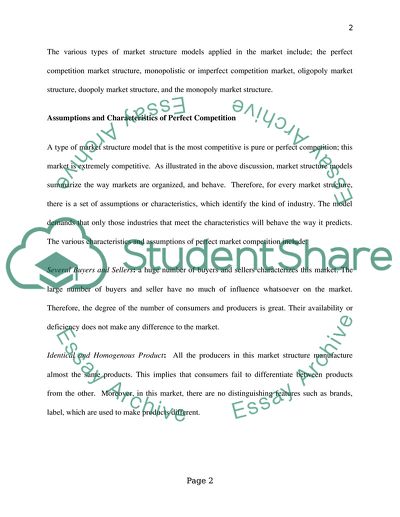Cite this document
(Market Structure Models Coursework Example | Topics and Well Written Essays - 1500 words, n.d.)
Market Structure Models Coursework Example | Topics and Well Written Essays - 1500 words. Retrieved from https://studentshare.org/marketing/1611787-distinguish-between-the-various-market-structure-models-in-terms-of-their-characteristic-features-and-behavioural-assumptions-use-two-examples-of-your-own-choice-to-illustrate-any-two-types-of-product-market-structures
Market Structure Models Coursework Example | Topics and Well Written Essays - 1500 words. Retrieved from https://studentshare.org/marketing/1611787-distinguish-between-the-various-market-structure-models-in-terms-of-their-characteristic-features-and-behavioural-assumptions-use-two-examples-of-your-own-choice-to-illustrate-any-two-types-of-product-market-structures
(Market Structure Models Coursework Example | Topics and Well Written Essays - 1500 Words)
Market Structure Models Coursework Example | Topics and Well Written Essays - 1500 Words. https://studentshare.org/marketing/1611787-distinguish-between-the-various-market-structure-models-in-terms-of-their-characteristic-features-and-behavioural-assumptions-use-two-examples-of-your-own-choice-to-illustrate-any-two-types-of-product-market-structures.
Market Structure Models Coursework Example | Topics and Well Written Essays - 1500 Words. https://studentshare.org/marketing/1611787-distinguish-between-the-various-market-structure-models-in-terms-of-their-characteristic-features-and-behavioural-assumptions-use-two-examples-of-your-own-choice-to-illustrate-any-two-types-of-product-market-structures.
“Market Structure Models Coursework Example | Topics and Well Written Essays - 1500 Words”, n.d. https://studentshare.org/marketing/1611787-distinguish-between-the-various-market-structure-models-in-terms-of-their-characteristic-features-and-behavioural-assumptions-use-two-examples-of-your-own-choice-to-illustrate-any-two-types-of-product-market-structures.


